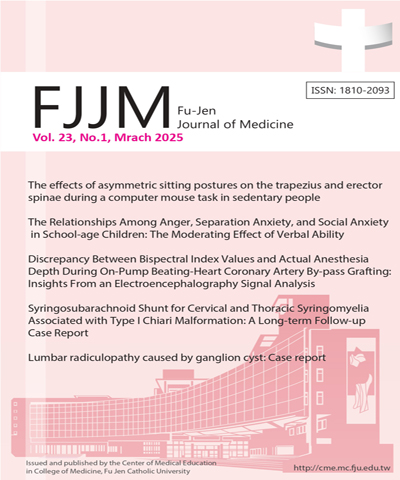
輔仁醫學期刊/Fu-Jen Journal of Medicine
輔仁大學醫學院,正常發行
選擇卷期
- 期刊
According to research surveys, the patients with type 2 diabetes often lack safety protective equipment for the removal of insulin syringe needles in their home. Approximately 70% of the patients and their families using an insulin pen have been pricked by its needle. The needle-stick not only potentially causes hepatitis, human immunodeficiency virus (HIV), and fatal diseases, but also affects psychological health. The method in this study includes the use of stereolithography (SLA) 3D printing technology for innovative research and development of an insulin-pen- needle-remover. This insulin-pen-needle can be safely removed from the remover and directly discarded into the disposal bin without recapping with both hands, so that the safety of patients/their families can be ensured, the risk of needle-stick infection reduced, and the quality of health care for the patients with diabetes improved. Therefore, with the appearance of 3D printing technology, this study was aimed to explore the innovations applicable to medical care and rehabilitation.
- 期刊
Introduction: Despite many published guidelines for appropriate admission to the intensive care unit (ICU), surgical patients are frequently admitted to the surgical ICU without following these criteria. The purpose of this study was therefore to examine the impact of our practice of the SICU admission on the utilization of hospital resources and patient outcomes. Methods: We prospectively collected information of all surgical patients admitted to SICU between January 1, 2013 and June 30, 2014. We compared demographic data and clinical outcome of those admitted for less than 48 hours (short stay) with data of those staying in SICU for longer than two days (regular stay). Results: There were 408 out of 1,278 patients admitted to SICU for less than 48 hours (mean=20.73±5.30 hours). These short stay patients were more likely to have operations and with lower admission APACHE II scores. The readmission rates to SICU within 48 hours were significantly lower for short stay patients (1.69% vs. 4.04%, p<0.05). Finally, more emergency room patients were admitted to the MICU or burn unit due to lack of available SICU beds when the unit had short stay patients. Conclusion: Our policy of liberal admission of surgical patients to SICU has its merit especially when SICU beds are available. However, it does have some drawbacks including diverting patients to nonsurgical ICUs, placing more pressure on nurse staffing, and spending more medical resources. It is time to develop more stringent criteria for SICU admission and to design step-down units to serve as a gap between ICU and wards in order to free SICU beds for more critical patients.
- 期刊
Superior mesenteric artery (SMA) syndrome is a condition arising from the compression of the duodenum between the SMA and the aorta and subsequently causing bowel obstruction. Its initial management is usually conservative with nutritional support. Surgical intervention is indicated when conservative management fails. We report a case with SMA syndrome and episodes of intestinal obstruction, which was successfully treated by duodenojejunostomy.
- 期刊
We report a patient with heart failure who received a cardiac resynchronization therapy defibrillator implant and suffered from wide QRS complex tachycardia and repetitive shocks from his defibrillator. Several episodes of ventricular tachycardia were induced by inappropriate defibrillator shocks for slow atrial flutters with one to one ventricular conduction. We performed atrioventricular node ablation and successfully eliminated the inappropriate shocks and improved biventricular capture.
- 期刊
Pneumoperitoneum is an ominous imaging sign and is frequently seen in conditions that require surgical intervention. However, surgery can be avoided in some unique cases presenting with pneumoperitoneum. We present the case of an 83-year-old man who reported to our emergency department with the chief complaints of fever and right upper quadrant pain for one week. Although abdominal computed tomography revealed definite pneumoperitoneum, it was determined to be a rare case of Pneumatosis coli, wherein surgery could be avoided. Although the diagnosis of pneumoperitoneum is intimidating at best, conservative management should always be considered in cases of minimal abdominal pain and the absence of peritoneal signs, fever, and leukocytosis, as seen in the present case.
- 期刊
Electrolyte imbalance is not uncommon in uremic patients. Diet control and dialysis per se are able to control some but not all, especially calcium (Ca) and phosphate (P) imbalance. Many patients with end-stage renal disease (ESRD) have ectopic calcification in different organs even without hypercalcemia. Instead, hyperphosphatemia and elevated Ca × P product predispose patients to ectopic calcifications such as vascular calcification and subsequent vascular events. Hyperphosphatemia observed in ESRD patients could lead to secondary hyperparathyroidism, or the so-called renal hyperparathyroidism. Therefore, hyperphosphatemia and secondary hyperparathyroidism might be the main factor that leads to ectopic ossification. Herein, we present a female patient with ESRD who underwent continuous ambulatory peritoneal dialysis (CAPD) for 10 years. In the preoperative survey for colon cancer, both abdominal radiography and abdominal computed tomography images identified diffuse bowel wall calcification, but the patient had no gastrointestinal tract symptoms. Unexpectedly, gold-streaked small intestine was found during the operation, which was compatible with the pattern of small intestine calcification in the imaging study. This presentation was different from the morphology of encapsulating peritoneal sclerosis (EPS), an unusual complication in PD patients. This pattern of peritoneal calcification is referred to as calcifying peritonitis. Although the causal relationship between calcifying peritonitis and EPS is unclear, PD patients might better be switched to hemodialysis as soon as possible once peritoneal calcification is noticed.

